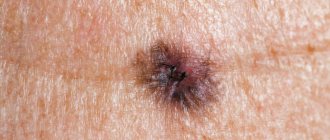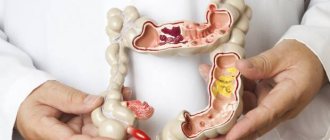In the 1st century BC. Syrian physician Aretaeus of Cappadocia described an unusual, severe disease of the gastrointestinal tract, which he called “bloody” diarrhea. The illness began acutely, progressed with severe dehydration and severe pain in the lower and left side of the abdomen. So, from the description of a Middle Eastern healer, medicine learned about such a dangerous disease as shigellosis , or dysentery .
For one and a half millennia, no one thought about the infectious nature of dysentery. Even the very name of this disease, which is translated from ancient Greek as a common “intestinal disorder,” directly indicates the poor knowledge of ancient and medieval physicians in the field of epidemiology. Only in the 18th century did specialists in internal medicine finally pay attention to a completely obvious fact: shigellosis is very prone to spreading rapidly throughout the population. At the beginning of the 19th century, the infectious nature of dysentery was no longer in doubt.
Shigellosis is an acute infectious disease characterized by typical damage to the lower parts of the digestive tract (sigmoid and rectum) with symptoms of general intoxication and the development of dehydration.
Etiology
The causative agent of shigellosis is a small bacterium of the genus Shigella, belonging to the Enterobacteriaceae family. From a clinical point of view, four types of this microorganism pose the greatest epidemiological danger to humans:
- Shigella dysenteriae, which causes severe Grigoriev-Shiga shigellosis.
- Shigella flexneri.
- Shigella boydii.
- Shigella sonnei.
All Shigella have a similar structure, which unites them with all other microorganisms of the Enterobacteriaceae family. Each type of Shigella is divided into several serovars, that is, into subgroups that are distinguished in accordance with the nature of the antibodies formed against these bacteria.
In total, there are about fifty different serovars of Shigella, and each of them causes different clinical variants of bacillary dysentery.
- Cell membrane containing somatic O-antigen.
- Surface K-antigen capsule.
- Lipopolysaccharide complex (LPS), which plays the role of endotoxin.
Different types of Shigella produce different proteins that are toxins to the cells of the intestine and its nerve plexuses. Shigella Grigorieva-Shigi (Sh. dysenteriae 1) produces the strongest Shiga toxin , which affects not only the intestines, but also blood cells.
Pathogen, its properties and routes of transmission
This is what the causative agent of dysentery looks like - a bacterium of the genus Shigella.
Shigellosis can be caused by gram-negative bacteria belonging to the Shigella genus, which belongs to the Enterobacteriaceae family. They are immobile rods about 2-3 microns in size.
Shigella does not form spores and is extremely stable in the external environment, which explains the rapid spread of this infectious disease:
- Such microorganisms can remain viable for a long time in water and milk. They do not die when water is heated to 60 degrees and survive at this temperature for 10 minutes.
- Low sensitivity to ultraviolet rays (under their influence they can exist for about 40 minutes) and extremely low temperatures (down to –160 degrees).
- Shigella lives much longer on fruits or dairy products - about 14 days.
- The rods are resistant to the acidity level of gastric juice and therefore easily enter the intestines in a viable state.
The rapid penetration of bacteria into the tissues of the human body is ensured by enzymes such as hemolysin, plasmacoagulase, hyaluronidase and fibrinolysin. Shigella enters the cells of the walls of the colon (mainly in its distal section), remains there and begins to multiply.
After Shigella begins dividing and during their life activity, the following toxins begin to enter the infected person’s body:
- an endotoxic compound that appears when the rods are destroyed, causing damage to intestinal cells, entering the blood and affecting the vascular and nervous system;
- exotoxin, released during the life of rods and damaging the membranes of intestinal cells;
- enterotoxin, which enhances the removal of water and salts from the body (in the form of diarrhea);
- a neurotoxin that provokes damage to nerve cells and leads to fever, headache and decreased tolerance to any stress.
In addition to the toxic effect on the infected body, the appearance of Shigella in the intestines disrupts the growth of normal microflora and activates the development of pathogenic microorganisms. As a result, the balance of beneficial and opportunistic microflora is disrupted, and this fact contributes to the failure of normal digestion.
After entering the body and being excreted along with feces, Shigella retains its viability for 1-2 weeks.
Depending on the properties described above, the causative agents of bacterial dysentery are divided into the following subgroups:
- Grigorieva-Shiga;
- Stutzer-Schmitz;
- Large-Saxa;
- Flexner;
- Sonne.
Each subgroup is divided into serovars, of which there are about 50 in total. They can live in different regions and differ in their properties.
Flies and other insects that come into contact with environments containing Shigella can become carriers of the pathogen. The infection is transmitted from person to person through household contact, through water or food (for example, due to eating poorly washed fruits or insufficient heat treatment). For infection, which can provoke the development of the disease, the entry of 200-300 viable Shigella into the human body is often sufficient.
Shigella infection from person to person occurs if one of them:
- patient – releases the pathogen during acute or chronic course of the disease;
- recalescent - releases the pathogen, but has already been ill and 2-3 weeks have passed after recovery;
- carrier - excretes the pathogen, but is not sick.
Epidemiology
The source of infection for bacterial dysentery is only humans. He may suffer from an acute or chronic form of infection, as well as a bacteria carrier. People suffering from mild and asymptomatic forms pose a tremendous danger, especially workers in food production, educational and medical institutions.
The spread of shigellosis is realized by the fecal-oral mechanism , but the routes of transmission differ:
- With Grigoriev-Shiga shigellosis, the leading route of transmission is through household contact, that is, it is a typical “dirty hands” disease.
- With Flexner's shigellosis, the water route is realized.
- With Sonne shigellosis, food becomes the main factor in transmitting the bacterium.
About 97% of cases of bacterial dysentery are due to Flexner and Sonne , while extremely severe Grigoriev-Shiga shigellosis is fortunately becoming less and less common every year. Until recently, this form of the disease was observed infrequently, but in recent years new outbreaks of infection have been reported in endemic regions and imported cases.
It is paradoxical that urban residents suffer from bacterial dysentery on average 2 times more often than rural residents. The peak incidence occurs in summer and autumn.
What preventive measures are used?
To protect yourself from a disease such as dysentery, you must adhere to certain preventive measures that will help avoid pathology:
- You cannot take food products from unverified places of sale. You also need to check the license and not purchase uncertified products, as well as vegetables and fruits with signs of rot, overripeness and spoilage.
- It is not recommended to purchase cut melons and watermelons.
- Fresh vegetables and fruits must be thoroughly washed in running water and scalded with boiling water. Ideally, remove the skin from the fruit.
- You should not drink only boiled water. You can simply filter running water, freeze it, or drink bottled water.
- Do not purchase food products that are sold in local infected areas, and also carefully monitor expiration dates that are located outside the refrigerator.
- Follow sanitary and hygienic standards and wash your hands after using the toilet, preparing food, and before eating food.
- Swim only in tested and approved bodies of water, and do not drink water from them.
Pathogenesis
Shigella is classified as an invasive microorganism; in other words, they do not just multiply on the intestinal mucosa, but actively penetrate into it. As a result of the active inflammatory process, multiple intestinal ulcers are formed, and its local nervous regulation is disrupted.
Grigoriev-Shiga dysentery is extremely severe. The causative agent of this infection is capable of secreting Shiga toxin, which disrupts the functions of the intestinal wall, nervous system and blood cells. To become infected with this type of bacterial dysentery, only 3-5 Shigella are enough.
Treatment of intestinal infection
If signs of dysentery appear, you should immediately come to a medical facility or call an ambulance. Before the ambulance arrives, it is recommended to drink more to maintain fluid and electrolyte levels in the body. But it needs to be done correctly.
Recommended reading: Shank Prakshalana
For these purposes, you can use boiled water at a comfortable temperature, but it is better to prepare a solution of electrolytes. Drinking electrolytes should be present in your home, country and travel first aid kit in case of intestinal disorders. They are sold in pharmacies in the form of powders and contain important microelements - salts, potassium, magnesium, sodium, etc., allowing you to effectively cope with exicosis.
You need to drink fractionally and regularly. Under no circumstances should you drink water in glasses. This will only provoke an attack of vomiting. It is better to spoon feed your child every thirty to sixty seconds. An adult can drink in tiny sips. It is advisable that the patient receive at least fifty milliliters of fluid every five to ten minutes.
In addition, before the doctor arrives, you can take enterosorbents or enzyme preparations. The effect of such drugs is limited only to the gastrointestinal tract. They are not absorbed into the blood and do not cause side effects. It is not advisable to use activated carbon. It is an outdated first generation enterosorbent. In addition, to get the effect you need to drink about a glass of activated carbon (about fifty tablets).
Like many other similar diseases, dysentery is treated with the use of appropriate antibiotics - penicillins, fluoroquinolones (Ofloxacin, Ciprofloxacin), etc. The infection is sensitive to antibacterial drugs and can be treated without problems. Patients who have lost a lot of fluid are given intravenous drips. The use of modern means makes it possible to suppress the infectious process effectively and in the shortest possible time. Even with a severe course of the disease, the hospital stay takes, on average, one and a half to two weeks.
The dog tick has a much wider distribution range. In addition to encephalitis, it also carries other dangerous diseases, such as Lyme disease and Marseilles fever.
Symptoms of dysentery
Usually the disease begins acutely: within a few hours the body temperature rises to febrile levels (up to 39 degrees), headaches, severe weakness, malaise and weakness appear. These symptoms can last up to 2-3 days, they are accompanied by nausea, loss of appetite, even aversion to food, and there may be repeated vomiting of recently eaten food, which brings relief.
During the first 1-2 days, stool softens, bowel movements become more frequent, and profuse and foul-smelling loose stools appear up to 6-8 times a day (due to damage to the small intestine).
Patients are bothered by abdominal pain, often of a cutting nature. At the very beginning they may be diffuse, but after 1-2 days they gradually move down the abdomen and into the left lower abdomen. At the same time, changes in stool :
- Then, with each bowel movement, the volume of stool becomes smaller, they lose their fecal character (the process moves to the large intestine).
- 3-4 days after the onset of the disease, the stool takes on the classic form of “rectal spitting” for shigelosis - a scanty lump of cloudy mucus, often mixed with blood and even pus (which is caused by ulcerative lesions of the colon mucosa).
Bacterial dysentery is characterized by unbearable and severe pain in the perineum and in the anus and rectum, which precede each trip to the toilet ( tenesmus ), as well as false urges when the patient wants to go to the toilet, but there is no feces.
The gastroenterocolitic variant characterized by the rapid development of clinical signs, the spread of pain not only in the left lower abdomen, but also in the middle, as well as more profuse bowel movements. In this case, repeated vomiting and loose stools are observed, and in general this form is not much different from a common acute intestinal infection.
A mild form of shigellosis often goes away on its own by the beginning of the 2nd week of the disease, but complete recovery occurs only after 1-1.5 months. In moderate and severe forms, there is a risk of developing dehydration, as well as cardiovascular complications (especially in older people).
Prevention of dysentery includes measures to prevent infection and strengthening the immune system
A disease such as dysentery can be transmitted from a sick person to his environment. Therefore, you should know the basic principles of preventing this infection. Infectious disease doctors have thoroughly studied the pathogen and its routes of transmission. The clinical picture of the disease is also described in detail. All this gives an idea of protective measures.
Currently, prevention plans have been developed: both general and locally (for example, when a sick person remains at home for treatment). In this article you will find information about what you need to do to prevent dysentery, as well as methods of prevention even if the infected person is constantly near you.
What is dysentery and how does it manifest?
Dysentery is an acute intestinal infection caused by a special type of bacteria (shigella), hence the second name, shigellosis.
Dysentery has an acute onset, and there are 4 stages: initial, peak, decline and recovery.
Dysentery manifests itself with a number of pathological symptoms:
- Hyperthermia . The increase in body temperature may be insignificant or febrile numbers may be noted (above 38 degrees). First of all, it depends on the form of the disease (acute or chronic);
- General intoxication , which is manifested by the following symptoms: Weakness;
- Dizziness;
- Nausea;
- Vomit;
- Headache;
- Lethargy, lethargy;
The causative agent of shigellosis
The causative agent of this intestinal infection is Enterobacteriaceae of the genus Shigella. They are gram-negative rods that do not move. Shigella grows well on regular nutrient media and is not capable of forming spores and capsules.
There are about 40 serotypes of these bacteria, however, the most popular and frequently occurring are Sonne, Grigorieva-Shiga, Newcastle and Flexner.
Shigella produces 2 types of toxins:
- Exotoxins . They have a detrimental effect on the intestinal mucosa, that is, they destroy it. Thanks to this, bacteria penetrate the membrane cells and multiply there;
- Endotoxins . These toxic substances are released when Shigella is destroyed. It is these toxins that affect the human body systems and cause pathological symptoms.
These bacteria remain viable for a long time in the feces of a sick person, as well as on care items contaminated by them.
In moist soil at a temperature of no less than 5 and no more than 15 degrees, Shigella lives about 60 days. For 14 days they are stored on money, in dairy products, as well as on unwashed vegetables, berries and fruits.
Enterobacteriaceae are sensitive to low (freezing) and high temperatures. When boiled, it dies instantly. Disinfecting solutions also have a detrimental effect on them (with exposure for 4 minutes).
Shigella quickly loses sensitivity to antibacterial agents. This is why epidemics often occur, and the disease can become chronic.
Methods of infection
Dysentery often occurs in children's groups, however, adults can also get sick. You can become infected from a sick person and a bacteria carrier. The most dangerous are patients with an acute form, as well as during an exacerbation of chronic dysentery.
The mechanism of occurrence of the disease is fecal-oral. The pathogen enters the body through the oral cavity and is excreted in feces through the intestines.
Ways of contracting dysentery:
- Contact and household . Bacteria can reach humans through contaminated objects and toys. This is especially true among children, since they often do not observe basic rules of personal hygiene (they do not wash their hands after visiting the toilet). Shigella is also transmitted through contaminated dishes and handshakes;
- Water . The infection enters reservoirs and water supply systems. Drinking contaminated water causes illness;
- Food path . Bacteria can be found in prepared foods, confectionery, salads, and so on. They get there if they are prepared by a bacteria carrier or a mildly ill person. Especially if he does not follow the rules of hygiene. The disease occurs when eating unwashed fruits and vegetables contaminated with infected feces.
Measures to prevent dysentery
Since this disease not only causes certain inconvenience, but is also easily transmitted to others, it is necessary to think about preventing its development and occurrence. To avoid infection with dysentery, personal hygiene should be strictly observed, which is the basis of all infection prevention.
similar articles Dysentery Indications and contraindications for vaccination against dysentery Intestines Incubation period and first symptoms of dysentery Dysentery Diagnosis, treatment and prevention of dysentery Sonne
Prevention of dysentery includes several simple rules:
- The simplest rule is to observe basic hygiene standards , as well as teach them to children. It should be remembered that washing your hands after visiting the toilet, as well as before eating, is extremely important. It is worth accustoming yourself and your child to perform hand hygiene after a walk, visiting a store, and so on. Today you can use various sanitizers and antibacterial wipes that are designed to disinfect your hands. This is a good hiking option;
- Eating only washed vegetables and fruits . Before eating, for example, an apple, it must be thoroughly washed under running water, preferably using a brush. Then it should be doused with boiling water. It is also recommended to peel off the skin;
- Purchase food only from trusted places . Avoid “spontaneous markets” and stalls near roads. If there are doubts about the quality of the product, you should ask the seller to present a certificate of conformity;
- Monitor the freshness of purchased products . Be sure to check expiration dates;
- Dairy products can only be purchased in original packaging , which indicates the manufacturer, production date, shelf life and storage conditions. Buying milk “from hand” is unacceptable, as there is a high risk that it will be contaminated;
- Fruits and vegetables should be selected without signs of rot , they should be without damage. You should not buy cut melons, pumpkins and watermelons, as there may be bacteria on the cut;
- Swim in bodies of water that are tested and safe;
- Drink purified or bottled water.
What to do if someone is infected near you
A sick person is hospitalized, however, if the disease is mild, he can be left at home.
If an infected person is admitted to a hospital, then SES employees carry out final disinfection at the patient’s home.
Measures to prevent dysentery if the infected person remains at home:
- He is provided with separate dishes , bed linen and hygiene items;
- Contact persons are monitored for 1 week after detection of infection (character of stool, body temperature and general condition);
- An ongoing disinfection is carried out in the outbreak , and after recovery the final one: All feces of the sick person must be treated with bleach, filled with a 10% solution for at least 2 hours;
- Processing dishes by boiling;
- Daily change of linen followed by disinfection (Lysol solution) or boiling;
- Hands should be washed and treated with Chloramine 0.5% solution;
Drugs to strengthen the immune system
Any disease, poor nutrition, unfavorable environmental conditions and other factors contribute to a decrease in the body's defenses. Nopharmacology and pharmaceuticals do not stand still. Today there are a large number of drugs that help strengthen the immune system and prevent various diseases and infections.
Groups of drugs that strengthen the immune system:
- Herbal medicines , that is, those made on the basis of medicinal plants: Echinacea - this plant contains many vitamins, and it also promotes the functioning of cellular immunity. A prominent representative of this group is Immunal;
- Ginseng and Eleutherococcus; the roots of these plants are used to prepare tinctures. They have a rich composition;
- Chinese lemongrass is rich in vitamin C and helps improve performance and resistance to stress. The leaves of this plant are brewed into tea;
- Bacterial preparations . They contain bacterial proteins that contribute to the development of specific immunity. Representatives of the group: IRS-19, Imudon;
- Preparations with interferon . They have antiviral activity and are widely used for the prevention and treatment of influenza (Grippferon, Arbidol, Kagocel);
- Vitamins . Currently, there are a large number of vitamin complexes. They help normalize metabolic processes and restore the body's defenses.
All medications should be used only after consultation with a doctor.
Chronic dysentery
Today, this form of shigellosis is observed quite rarely. Chronic bacterial dysentery develops either as a result of improper treatment of acute shigellosis, or takes an initially protracted course in predisposed individuals.
The recurrent course of chronic shigellosis is characterized by alternating periods of exacerbations, reminiscent of acute dysentery in a somewhat milder version, and periods of remission. Patients are concerned about periodic pain in the lower abdomen, mainly in the lower left, a prolonged increase in body temperature to subfebrile levels, general malaise and weakness.
The continuous course of chronic bacterial dysentery has a more malignant course. With it, there are no periods of remission and patients constantly suffer from incessant diarrhea and persistent abdominal pain. With each passing month, the disease progresses steadily, leads to serious disturbances in the function of internal organs and, in the absence of comprehensive treatment, can lead to death.
Complications of dysentery
With the modern level of medicine, they are very rare, mainly in people who practice self-medication, as well as in children and the elderly.
- Infectious-toxic shock.
- Perforation of the intestine with the development of peritonitis.
- Intussusception.
- Anal fissures.
- Haemorrhoids.
- Rectal prolapse.
- Hemolytic-uremic syndrome (in children).
Diagnosis of shigellosis
Acute bacterial dysentery can be suspected based on characteristic clinical manifestations, but only with extensive symptoms and a colitis variant.
However, time is of the essence, and delay in diagnosis can lead to extremely tragic consequences. Therefore, all patients with acute intestinal infection should be immediately hospitalized in an infectious diseases hospital, where, as part of a comprehensive examination, the following will also be carried out:
- Sowing feces onto nutrient media to obtain Shigella colonies.
- ELISA, PCR, RSK and other express diagnostic methods.
- Double serological study to identify the titer of antibodies to Shigella and the rate of their change.
Endoscopic examination methods (sigmoidoscopy, colonoscopy) provide very useful information from a diagnostic point of view.











